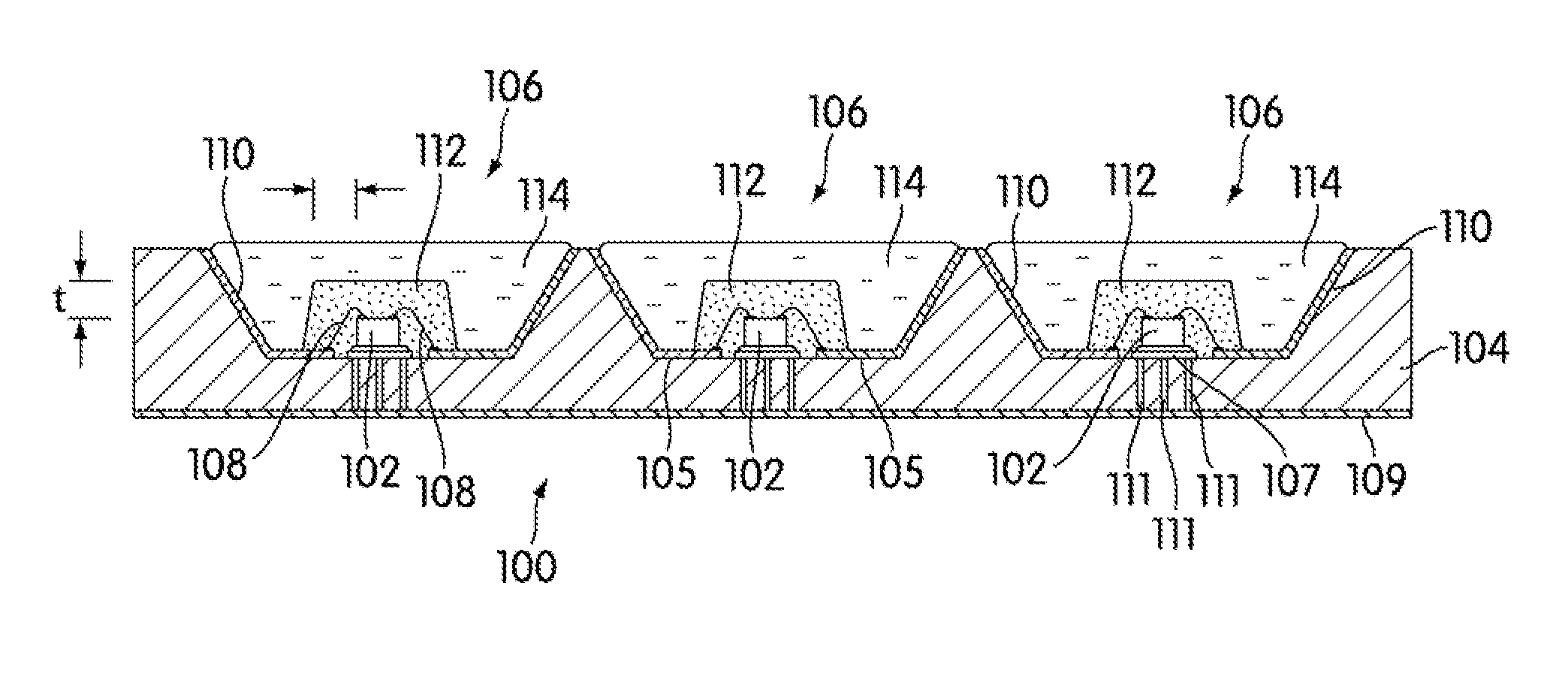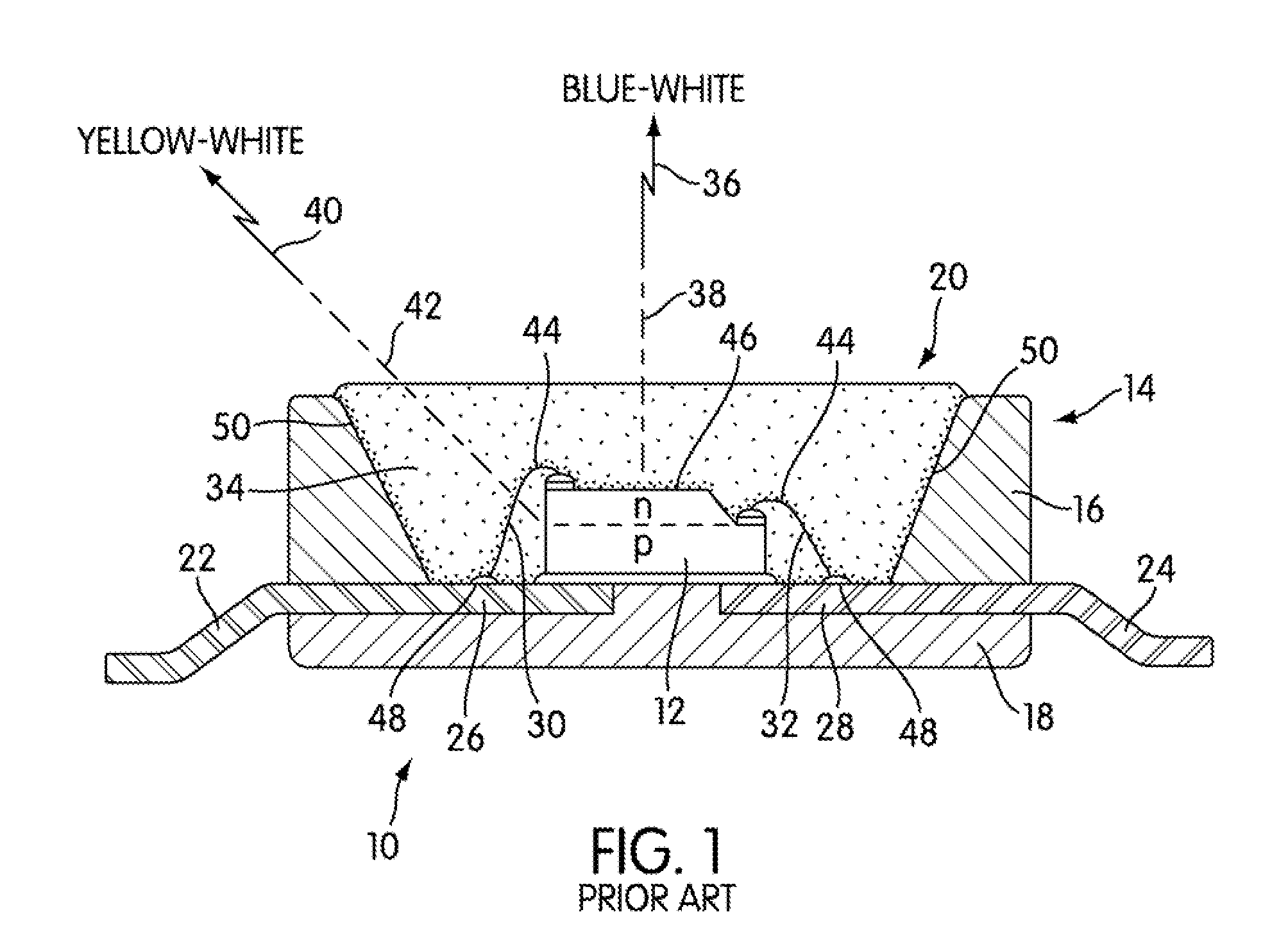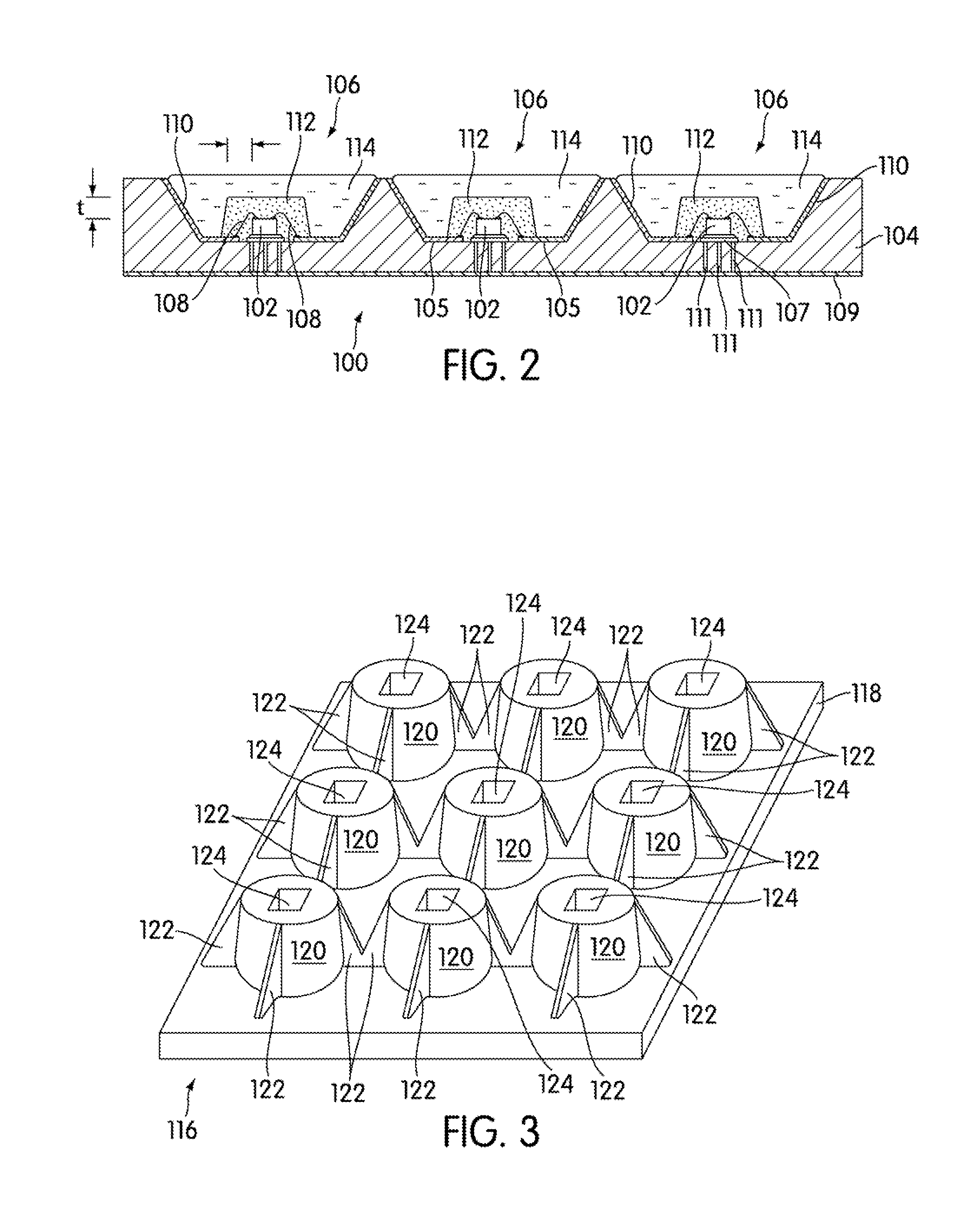Light emitting devices with phosphor wavelength conversion and methods of manufacture thereof
a technology of light emitting devices and wavelength conversion, which is applied in the direction of semiconductor/solid-state device manufacturing, semiconductor devices, electrical devices, etc., can solve the problems of color hue of light generated by the device, correlated color temperature (cct), and can vary significantly, so as to reduce the formation of air bubbles
- Summary
- Abstract
- Description
- Claims
- Application Information
AI Technical Summary
Benefits of technology
Problems solved by technology
Method used
Image
Examples
1st embodiment
1st Embodiment
[0055]FIG. 2 is a schematic sectional view of a white light emitting device 100 in accordance with a first embodiment of the invention. The device 100 comprises an array of blue (i.e. dominant wavelength in a range ≈400 to 480 nm) surface emitting InGaN / GaN (indium gallium nitride / gallium nitride) based light emitting diode (LED) chips 102 packaged in a high temperature package 104 such as for example a low temperature co-fired ceramic (LTCC) package of a type as described in co-pending U.S. Patent Application Publication No. 2009 / 0294780 A1 (Ser. No. 12 / 127,749 filed May 27, 2008) the specification and drawings of which are incorporated herein by reference. In FIG. 2 the device 100 comprises a square array of nine LED chips 102 (3 rows by 3 columns), though it will be appreciated that the device of the invention applies to other LED chip configurations that can comprise many more LED chips. The package 104 has in an upper surface a square array of circular recesses (c...
2nd embodiment
2nd Embodiment
[0078]FIG. 6 is a schematic sectional representation of a light emitting device 100 in accordance with a second embodiment of the invention. In this embodiment an array of blue (i.e. wavelength≈400 to 480 nm) surface emitting InGaN / GaN (indium gallium nitride / gallium nitride) based light emitting diode (LED) chips 102 is mounted on a substantially planar substrate 142 such as for example a metal core printed circuit board (MCPCB)—a so called chip on board (COB) arrangement. As is known MCPCBs are commonly used for mounting electrical components that generate large amounts of heat and comprise a layered structure comprising a thermally conducting base 144, typically a metal such as aluminum (Al), and alternating layers of an electrically non-conducting / thermally conducting dielectric material 146 and electrically conducting tracks 148, typically made of copper (Cu). The dielectric layers 146 are very thin such that they can conduct heat from components mounted on the el...
3rd embodiment
3rd Embodiment
[0091]FIG. 8 is a schematic sectional representation of a light emitting device 100 in accordance with a third embodiment of the invention. In this embodiment an array of surface emitting InGaN / GaN based light emitting diode (LED) chips 102 are mounted on a planar substrate 142 such as for example a printed circuit board, MCPCB or ceramic circuit board. Each LED chip 102 is encapsulated with a phosphor coating 112 that is substantially conformal in form and the phosphor coating is itself encapsulated within a light transmissive (transparent) cover 162 that provides environmental protection of the phosphor encapsulation 112. The transparent cover 162 further defines a respective lens element 164 corresponding to each LED chip 102 for focusing or otherwise directing light emission from the device. As will be described the transparent cover 162 is used to mold the phosphor encapsulation 112 and is left in situ. Due to the dual function of the cover 162, that is as both a ...
PUM
 Login to View More
Login to View More Abstract
Description
Claims
Application Information
 Login to View More
Login to View More - R&D
- Intellectual Property
- Life Sciences
- Materials
- Tech Scout
- Unparalleled Data Quality
- Higher Quality Content
- 60% Fewer Hallucinations
Browse by: Latest US Patents, China's latest patents, Technical Efficacy Thesaurus, Application Domain, Technology Topic, Popular Technical Reports.
© 2025 PatSnap. All rights reserved.Legal|Privacy policy|Modern Slavery Act Transparency Statement|Sitemap|About US| Contact US: help@patsnap.com



